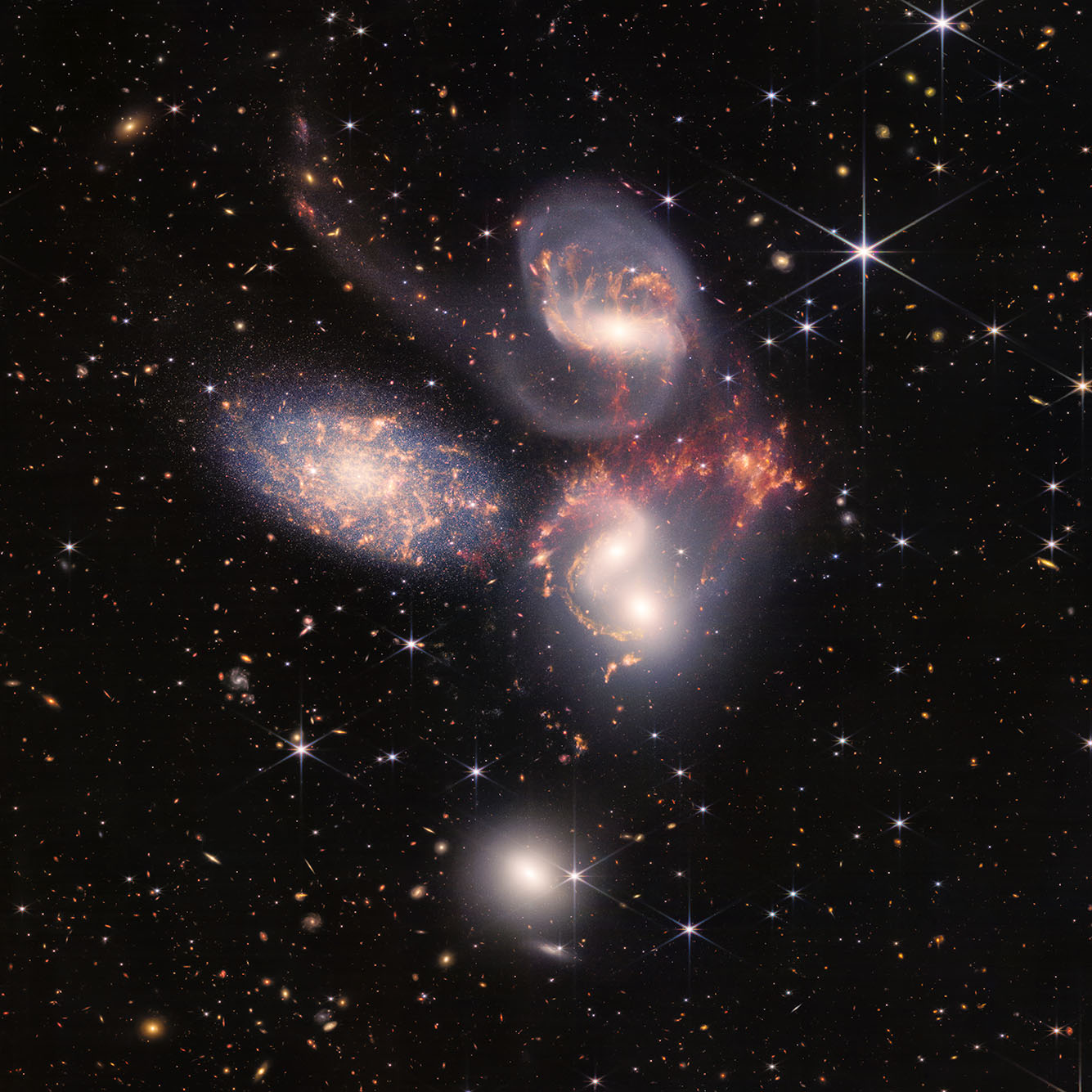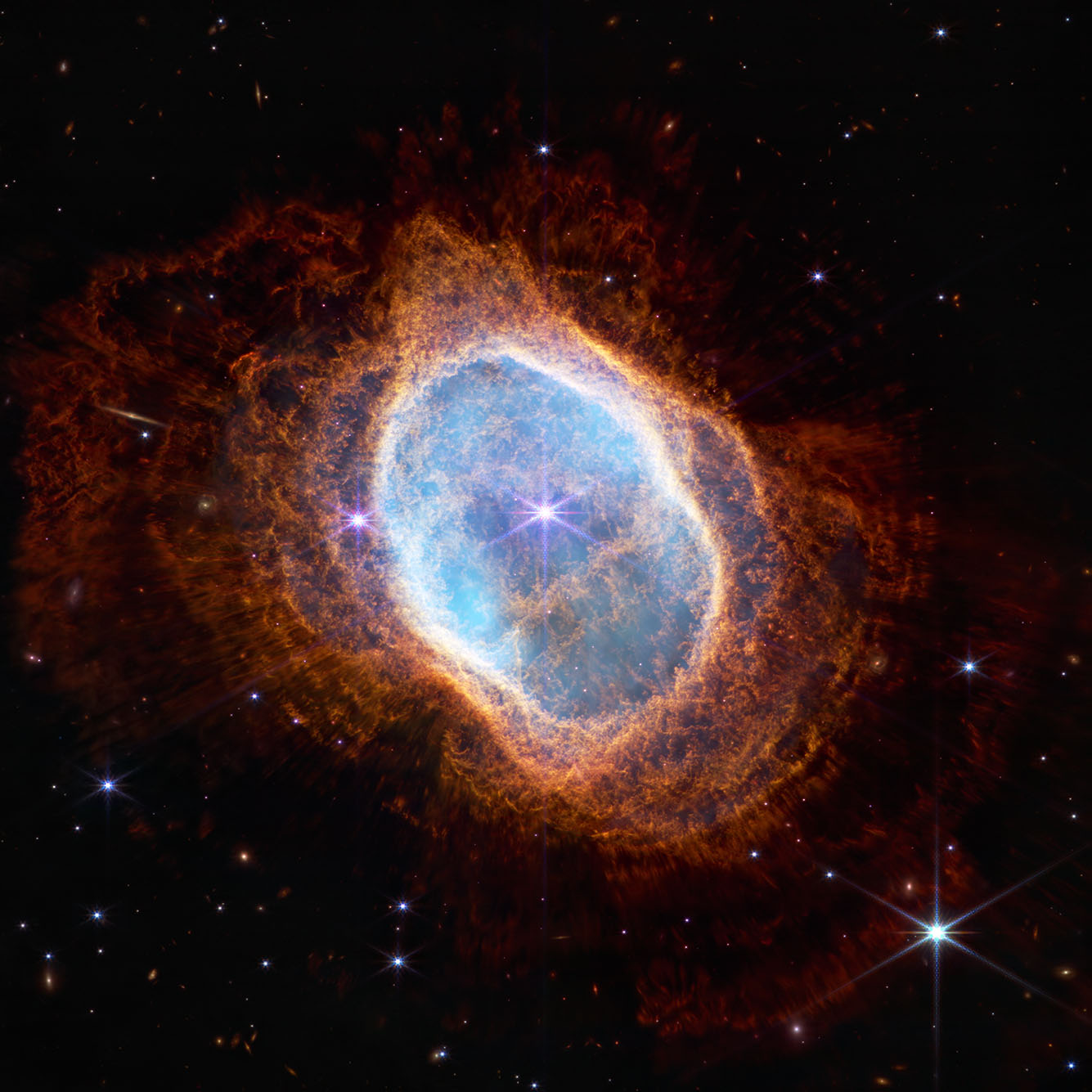Impressed, excited, amazed-scientists and any fans of outer space were astonished as the National Aeronautics and Space Administration (NASA) on Tuesday unveiled the clearest pictures of deep space ever seen. One scientist was even moved to tears. The five images came from the largest infrared telescope ever launched into space, the James Webb Space Telescope (JWST, Webb for short). Webb has been orbiting the Sun since it took off from French Guiana on December 25, 2021, and the stunning full-color images are only the beginning of what's expected from the telescope in the next two decades.
The images opened our eyes to a nebulous dying star, called the Southern Ring Nebula, which stretches across the black backdrop of space in glowing reds and blues, with a shimmering star in the center, and to the Carina Nebula-which looks strikingly like a craggy mountain range against a night blue sky with young stars shining through the entire region.
"Webb will enable huge advances in the study of objects on a wide range of scales-from the details of exoplanets to the most distant galaxies. It will open up new windows on the universe," says Elizabeth Blanton, a Boston University College of Arts & Sciences associate professor of astronomy. Exoplanets are planets beyond our solar system, often orbiting other stars.


Stephan's Quintet (to the left) and the Southern Ring Nebula (to the right) both reveal never-before-seen details of galaxy groups and nebulae objects, which are clouds of gas and dust expelled by dying stars.
Blanton studies galaxy clusters, like that in the very first image from Webb (below), shown at a special White House teaser event the day before the main reveal; it is the deepest and sharpest infrared image of the distant universe of galaxy cluster SMACS 0723. A group of five galaxies, called Stephan's Quintet, was also caught on camera-the final image constructed from almost 1,000 separate files-and gives new insights into galaxy evolution in the early universe.
"With its sensitivity and resolution, JWST will enable the discovery and study of clusters of galaxies and individual galaxies so distant and early in the universe that they've never been able to be observed before," Blanton says. She wasn't the only BU astronomer excited by the results of Webb-a project that involved decades of planning and an international team of scientists. Catherine Espaillat, a CAS associate professor of astronomy and director of the Institute for Astrophysical Research, will be using data from Webb to observe protoplanetary disks.
"Protoplanetary disks are made up of the dust and gas that make up planets, and we will be using these spectra to measure the composition of the gas and the properties of the dust grains," Espaillat says. Her team is expecting high-resolution data in the mid-infrared wavelength, a type of light that our eyes can't detect on their own. An image of the Carina Nebula, a star-forming region, resonated with her the most since it's what she studies-the image revealed finer details of the clouds she's examined.
This image of galaxy cluster SMACS 0723, also called Webb's First Deep Field, captures even the faintest objects, like tiny dots of galaxies billions of years old. To put things in perspective, this slice of the vast universe covers a patch of sky approximately the size of a grain of sand held at arm's length, according to NASA.
"The discoveries are a big deal because they usher in a new era of discovery for astronomy," she says. "JWST is expected to be operational for 20 years, so it will undoubtedly lead us down new paths of exploration we haven't even contemplated yet. JWST will help us answer the question of how planets form and their potential for habitability."
Philip Muirhead, a CAS associate professor of astronomy and associate director of BU's Perkins Telescope Observatory, studies exoplanets and low mass stars like brown dwarfs. Data from Webb could help him and his team analyze the atmosphere of distant planets for signs of life, like water or oxygen.
"We're very happy that the telescope works," Muirhead says.
To further understand the significance of the Webb images, The Brink sat down with Muirhead to talk about how the telescope gets such fine images of the universe and how it will contribute to the search for life on other planets and our understanding of the universe as a whole.

This interview was edited for clarity and brevity.






